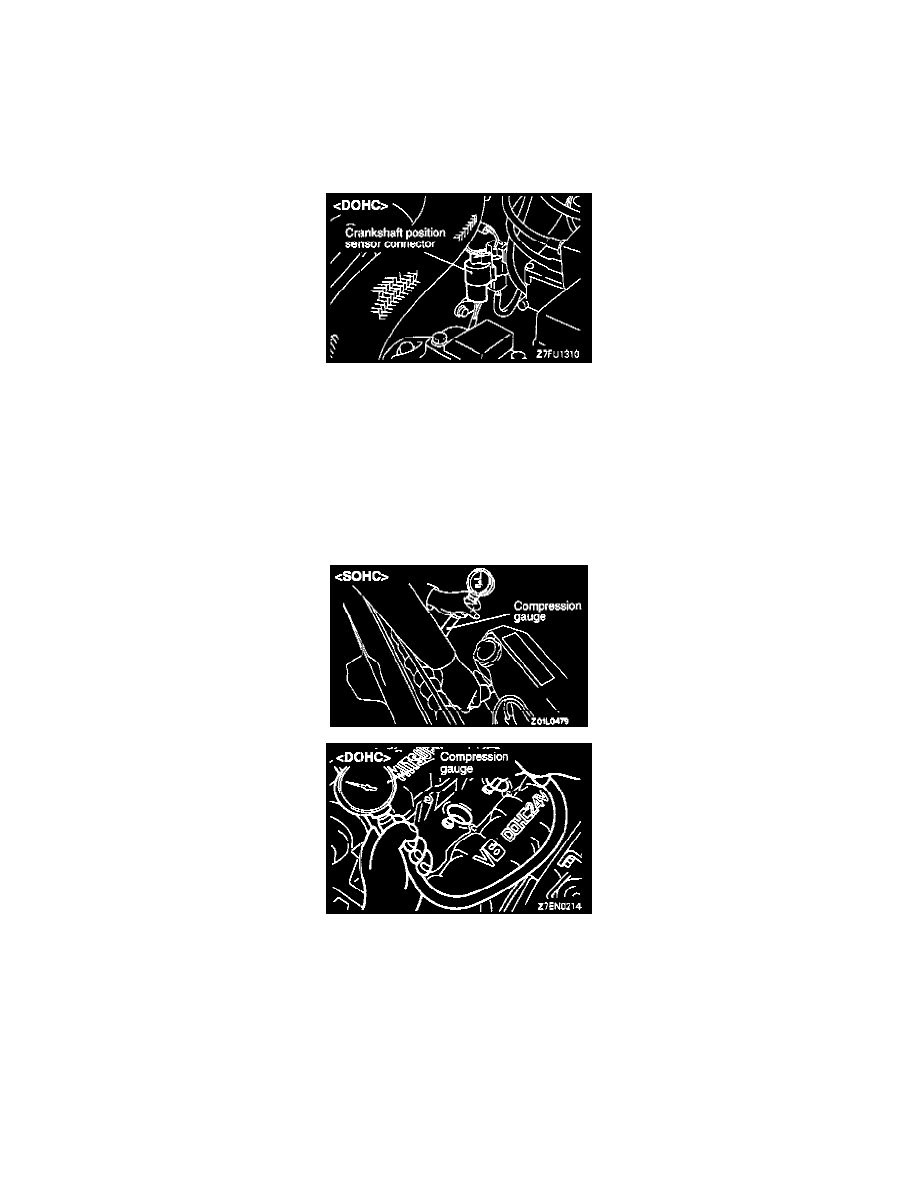3000GT VR-4 AWD V6-2972cc 3.0L DOHC MFI Twin Turbo (1998)

Compression Check: Testing and Inspection
(1) Prior to inspection, check to ensure that the engine oil, starter motor and battery are in proper condition. Place the vehicle in the following
conditions.
- Engine coolant temperature: 80 - 95° C (176 - 203° F)
- Lights, electric cooling fan and accessories: OFF
- Transaxle: Neutral (P for A/T)
(2) Remove the spark plug cables.
(3) Remove all of the spark plugs.
(4) Disconnect the crankshaft position sensor connector.
NOTE: By so doing the engine control module stops performing ignition and fuel injection.
(5) Cover the spark plug mounting holes with a shop towel, crank the engine, and then check for foreign substances deposited on the shop towel.
CAUTION:
1. When you crank the engine, keep away from the spark plug mounting holes.
2. If a compression measurement is performed with water, oil, fuel, etc. in the cylinder due to the cracks in the cylinders, these substances heated
to a very high temperature will blow off the spark plug mounting holes and could be dangerous.
(6) Install a compression gauge in a spark plug mounting hole.
(7) Set the throttle valve in a fully opened position, and crank the engine to measure the compression pressure.
Standard value:
<SOHC>:
1,180 kPa (171 psi) [250 - 400 r/min]
<DOHC - Non-Turbo>:
1,270 kPa (185 psi) [250 - 400 r/min]
<DOHC - Turbo>:
1,080 kPa (156 psi) [250 - 400 r/min]
Limit:
<SOHC>:
Minimum 875 kPa (127 psi) [250 - 400 r/min]
